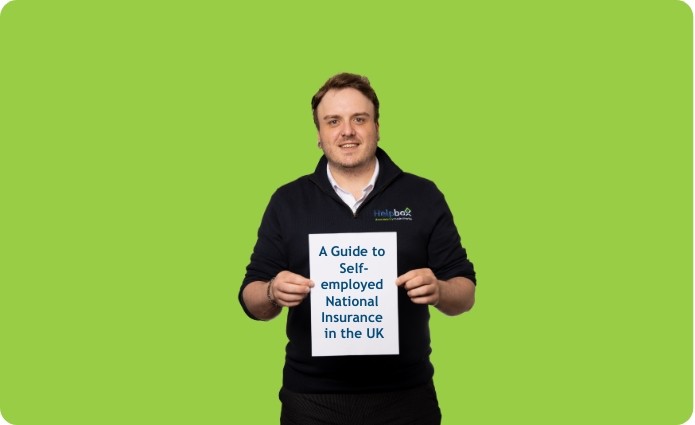
A Guide to Self-Employed National Insurance in the UK
A Guide to Self-Employed National Insurance in the UK
If you’re self-employed, National Insurance contributions (NICs) are an essential part of your financial obligations. While they might seem like another tax to keep track of, they’re crucial for securing benefits such as the State Pension and Maternity Allowance.
In the UK, self-employed individuals are required to pay Class 2 and Class 4 NICs. Let’s break down what each type involves, how much you’ll need to pay, and when these contributions are due.
1. Class 2 National Insurance
Class 2 NICs are designed to ensure that self-employed people qualify for certain state benefits, like the State Pension. Here’s what you need to know:
Who Pays Class 2 NICs?
If you’re self-employed and your profits exceed a specific threshold, you’ll need to pay Class 2 National Insurance.
Earnings Threshold for 2023-2024
For the tax year 2023-2024, you must pay Class 2 NICs if your annual profits are £12,570 or more. If your earnings fall below this amount, you’re off the hook for Class 2 payments—but you may still want to pay voluntarily (more on that later).
Rate
The rate for Class 2 NICs is £3.45 per week. Don’t worry, though—you won’t need to calculate this weekly. HMRC will sort it out as part of your annual Self Assessment tax return.
How It’s Paid
You’ll pay Class 2 NICs annually when you submit your Self Assessment. HMRC will calculate your contributions based on the profits you report, and you’ll make the payment along with any income tax and Class 4 NICs owed.
Key Point: Even though the weekly rate seems low, Class 2 NICs play an essential role in helping self-employed individuals qualify for benefits like the State Pension and Maternity Allowance.
2. Class 4 National Insurance
Class 4 NICs are more closely tied to your overall profit levels, and unlike Class 2, the amount you pay increases as your income grows.
Who Pays Class 4 NICs?
Anyone who’s self-employed and earns more than £12,570 in profits will also need to pay Class 4 National Insurance contributions.
Rates for 2023-2024
- 9% on profits between £12,570 and £50,270.
- 2% on profits above £50,270.
This means that if you’re earning a healthy profit, Class 4 NICs can add up quickly, particularly if your income crosses the higher threshold.
How It’s Paid
Like Class 2, Class 4 NICs are calculated and paid through your Self Assessment tax return. You’ll be notified of the total amount owed once HMRC processes your return. This will include any income tax, Class 2 NICs, and Class 4 NICs.
3. What If Your Profits Are Low?
If your annual profits fall below £12,570, you won’t need to pay Class 2 or Class 4 NICs. However, there’s an option to voluntarily pay Class 2 NICs. Why would you want to do that? The answer lies in your State Pension.
Paying voluntary Class 2 contributions can help ensure you’re building up enough qualifying years for your State Pension. Even if your business is just starting out or your profits dip below the threshold, making these voluntary payments can be a smart move to protect your future.
4. Payment Process for NICs
The process for paying both Class 2 and Class 4 NICs is pretty straightforward, and it’s done through your Self Assessment tax return. Here’s how it works:
- Calculate your NICs: When completing your Self Assessment, you’ll need to calculate both Class 2 and Class 4 contributions based on your profits.
- Receive notification from HMRC: After submitting your return, HMRC will send you a bill that includes the total amount owed for income tax, Class 2, and Class 4 NICs.
- Make your payment: Payments are generally due by 31 January following the end of the tax year. So, for the 2023-2024 tax year, your payment will be due by 31 January 2025.
It’s important to stay on top of this deadline, as late payments can lead to penalties and interest charges.
In Summary:
- Class 2 NICs are fixed weekly contributions for profits above £12,570. They help you qualify for benefits like the State Pension and are paid through your Self Assessment.
- Class 4 NICs are percentage-based contributions, starting at 9% on profits between £12,570 and £50,270, and 2% on profits above £50,270. These are also paid via Self Assessment.
- If your profits are below the £12,570 threshold, you can choose to make voluntary Class 2 NICs to maintain your eligibility for certain benefits.
Paying National Insurance as a self-employed individual might seem like just another task on the to-do list, but it’s essential to ensure you’re building up those vital qualifying years for the State Pension. It also keeps you covered for other benefits like Maternity Allowance, so it’s worth getting it right!
If you need help navigating your NICs or understanding how much you owe, reach out to Helpbox for guidance. We’re here to make the process easier for you.